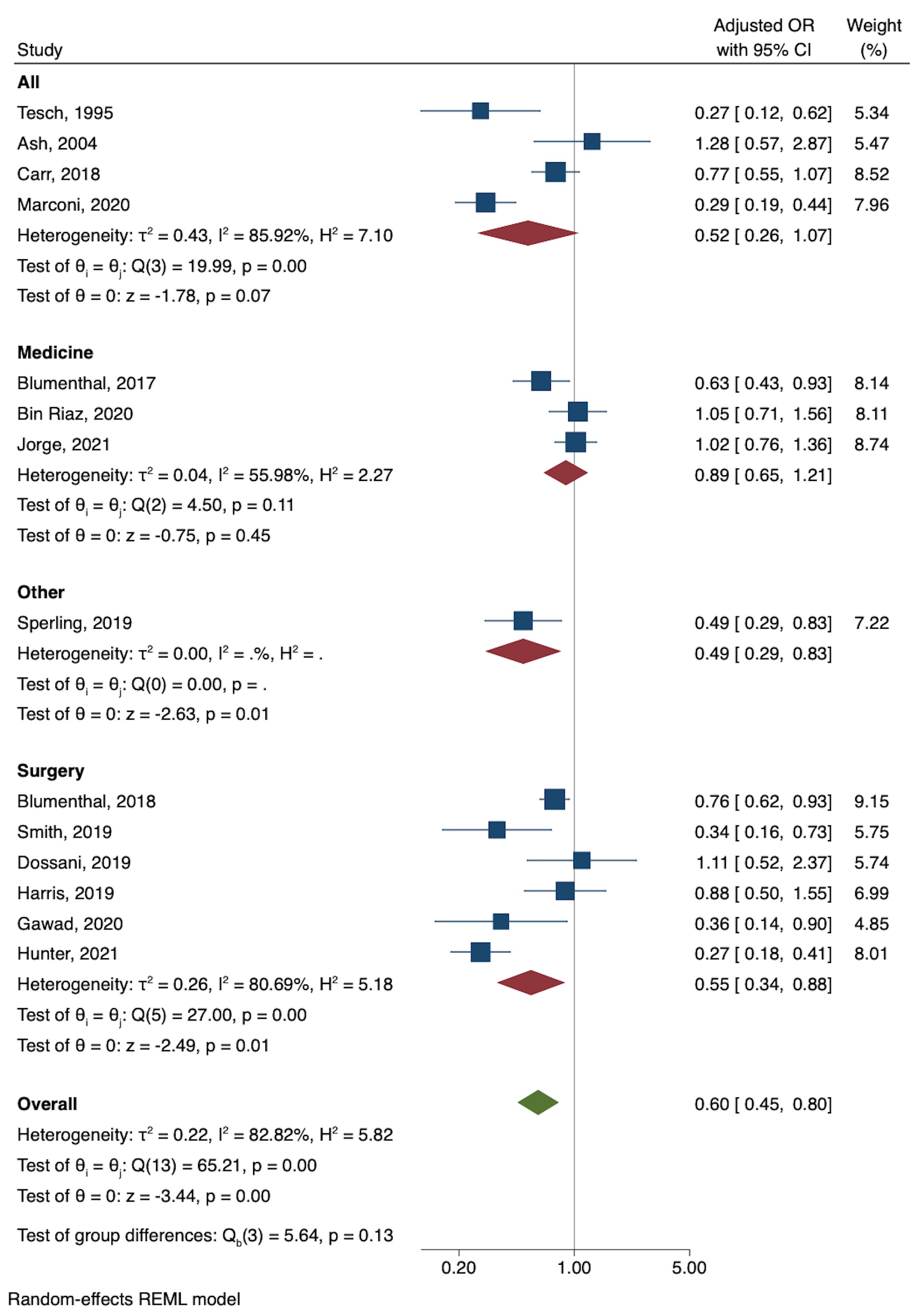Background: It is well established that there is a persistent gender gap in promotion in academic medicine despite an equal number of male and female medical students for the past 20 years. Possible mediators of this gender gap include differences between men and women in years on faculty, measures of productivity such as number of publications and grants, leadership positions and direct gender bias. We performed a systematic review of studies that report rates of promotion to full professor between men and women adjusted for potential mediators.
Methods: A systematic search of Academic Search Premier, Business Source Complete, Cochrane Library, ERIC, Google Scholar, Ovid Embase, Ovid MEDLINE, PubMed Scopus, and Web of Science Core Collection was conducted from inception through August 18, 2022. Gender was treated as binary given the limitations of the literature. All studies were included that reported the proportion of faculty that were full professors by gender. The primary outcome was the adjusted odds ratio for promotion to full professor stratified by area of medicine (Internal Medicine, Surgery, and other). Risk of bias was assessed using the Risk of Bias in Non-randomized Studies of Exposures (ROBINS-E) tool.
Results: Three hundred and twelve studies met inclusion criteria. The unadjusted odds ratio for promotion to full professor was 0.38 (95% CI, 0.35-0.40). Fourteen studies reported adjusted analyses. The overall adjusted odds ratio for promotion of women to full professor was 0.60 (95% CI, 0.45-0.80). The adjusted odds ratio for promotion to full professor in Surgery was 0.55 (95% CI, 0.34-0.88) and 0.89 (95% CI, 0.65-1.21) for studies limited to Internal Medicine. Overall risk of bias was high due to lack of inclusion of important confounders. Statistical heterogeneity was high (I² = 83%, p< 0.001). On meta-regression, 84% of the heterogeneity was due to whether the study was from the United States, which reported lower disparity (OR 0.75, 95% CI, 0.61-0.92).
Conclusions: Most studies continue to find a lower rate of promotion to full professor of women compared to men, even after adjustment for potential mediators such as number of publications, grants, or years on faculty. Gender disparity is particularly notable in Surgery and in studies from outside the United States. Studies limited to Internal Medicine did not find an adjusted difference in promotion. Our results suggest that differences in promotion are due both to differences in mediators of promotion and possible direct bias. Efforts to improve equity need to address both direct bias as well as the disparity in academic productivity.

